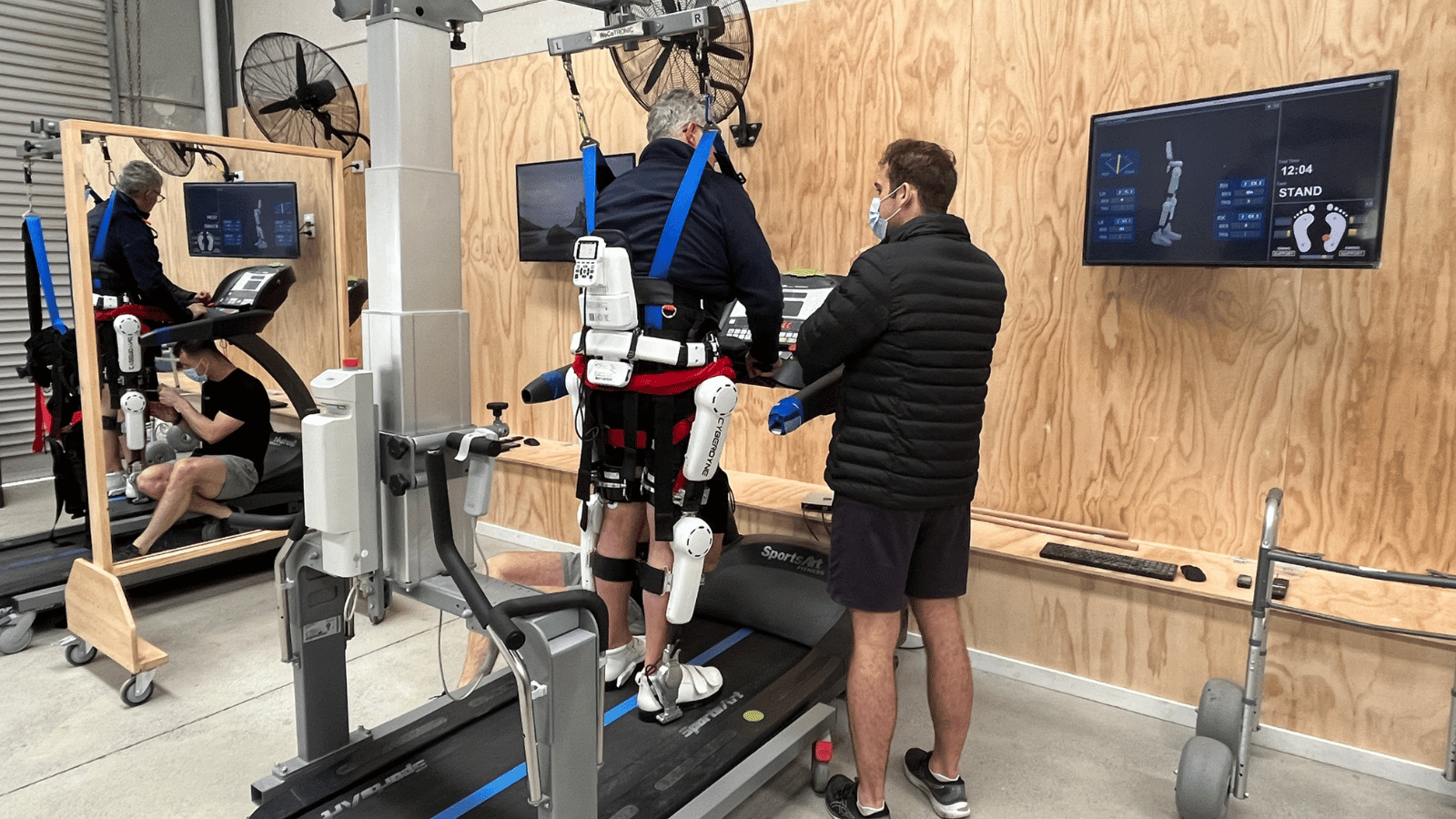Technological advancements in stroke rehabilitation
The following is an excerpt from an academic article by Malik et al (2022). The full article, including detailed footnotes, is available under open access via this link. RoboFit is in no way affiliated with, or endorse, the authors or the publication. We just thought you might find it interesting.
Various technology-based stroke rehabilitation interventions have been developed in the last few decades which have shown promising results in improving stroke patients’ functional mobility and independence. The use of technology promotes repetitive, task-specific training, active engagement of patients, integrating constructive and concurrent feedback, and accurately measuring functional improvement.
Introduction
Along with the neurological impairment, stroke also has long-term adverse effects on the physical, emotional, and social well-being of the stroke survivor. It reduces patients’ overall activity level, participation, and active involvement in the community. After being discharged from the rehabilitation centers, 65% of the individuals still do not make full motor recovery and cannot actively engage the affected limbs in the activities of daily living, indicating a need for further intensive intervention.3
The growing body of evidence on stroke rehabilitation suggests that neuroplasticity and optimum motor recovery depends on several elements such as repetitions and intensity of training, task-specificity, objective feedback, and motivation during therapy.5
Repetitions and Intensity of Training
The literature suggests that the stroke patients should be engaged in task-specific training. However, the outcomes of the task-oriented training will depend upon dosage and intensity of the exercise for optimum neuromotor recovery. Conventional rehabilitation practices often cannot fulfill the intensity and dosage requirement for stroke rehabilitation. The higher the dose of exercise the better are the results for stroke recovery.6

Task-specificity
Recent evidence has shown that technologies in stroke rehabilitation such as augmented reality and robot- assisted systems have the potential to provide a safe environment for intensive task-specific training. Task- specific training elicits cortical reorganization, which is difficult to achieve with conventional rehabilitation approaches.7,8
Objective Feedback and Motivation
Feedback and subsequent motivation play an essential role in motor learning. Post-stroke sensory and motor impairments make it difficult for the individual to detect and correct movement errors. Objective feedback is vital to learning references of correctness which allows the individuals to detect errors from sensory information.
It has been demonstrated that patients who were provided daily objective feedback on their walking speed could walk faster than those who did not receive any objective feedback.10 Lack of objective feedback followed by subsequent lack of motivation is one of the significant causes of failure to benefit from rehabilitation programmes.
Technologies in Stroke Rehabilitation Exer-Gaming
Gamification in stroke rehabilitation significantly motivates patients to adhere to exercise programmes. The patient uses hands or body motions to play the games, providing repeated practice to paretic limbs with consistent feedback and cues.11,12 In addition, the games provide a source of enjoyment for the patient, ultimately increasing motivation, duration, and intensity of training.11 Commercial games are affordable and readily available, but most are not custom-designed according to patient needs (speed, movement, and measurement).5 Various games have already been trialed with stroke survivors, including 2D, 3D, and natural user interfaces like Nintendo Wii Sport, PlayStation, Wii Balance, Xbox, Kinect, and Armeo-Senso showed positive outcomes.12,13
Robotic Rehabilitation
The robotic devices, also known as an exoskeleton, provide assistance to a part of the body to achieve motor control and movement after stroke.12,13 Research on robotics in stroke rehabilitation, has demonstrated significant improvements in functional outcomes.
Wearable Sensors
Wearable sensors detect the human body motion, assess the movement, and provide immediate feedback to patients for correction or modification of movement. The sensors provide objective data even in the absence of a therapist, potentially reducing diagnostic errors, which helps clinicians customize therapy and make appropriate adjustments. For example, EMG sensors providing muscle activity data can be used to monitor stroke patients’ motor function, allowing customization of their intervention.
Conclusion
Emerging technologies in stroke rehabilitation offer several advantages over conventional rehabilitation approaches like high repetitions and intensity, task specificity, objective feedback, increased user engagement, and motivation. The clinicians should consider the barriers and limitations associated with technology before designing a stroke patient training programme. Customized games and applications should be designed to meet individual patient rehabilitation needs and goals.
Citation: Malik, A.N., Tariq, H., Afridi, A. and Azam Rathore, F., 2022. Technological advancements in stroke rehabilitation. Journal of Pakistan Medical Association, 72(8), pp.1672-1674. http://eprints.bournemouth.ac.uk/37738/1/11472.pdf
